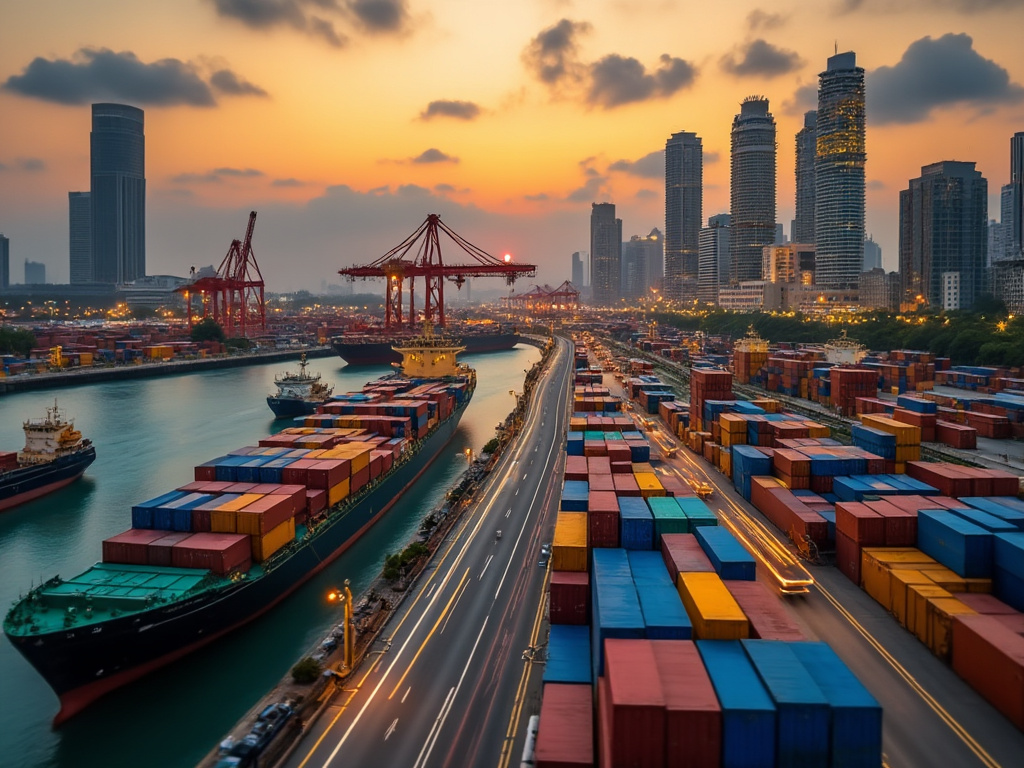
U.S. President Trump and Vietnam's To Lam discuss tariff reductions amid escalating trade tensions.
A recent phone call between U.S. President Donald Trump and Vietnam’s Prime Minister To Lam has opened pathways for negotiation regarding the substantial tariffs imposed by the United States on Vietnamese goods.
Observers suggest that this dialogue may reduce existing tensions and allow for further discussions.
The call, characterized by Trump as 'very productive', involved both leaders expressing a desire to address the 46 percent tariffs currently imposed on Vietnamese exports to the U.S.
President Trump reported that Prime Minister To Lam indicated Vietnam's interest in potentially abolishing their tariffs entirely, contingent upon negotiating a favorable agreement with the U.S. Following the conversation, Trump communicated his appreciation on social media and expressed anticipation for a forthcoming meeting.
According to a statement from the Vietnamese government, both parties have agreed to continue discussions with the goal of finalizing a bilateral agreement on tariffs soon.
Additionally, Trump has accepted an invitation to visit Vietnam in the near future.
Historically, President Trump has voiced concerns regarding the trade balance between the U.S. and various countries, mainly focusing on trade deficits, which occur when a nation imports more than it exports.
Experts have pointed out that this perspective often overlooks the considerable surplus the U.S. enjoys in the services sector.
As the global economy grapples with the implications of these tariffs, Asia is emerging as one of the regions most severely affected.
Tariffs imposed by the U.S. are averaging nearly 30 percent on exports from various Asian nations.
Reports indicate that Trump’s recent tariff policy measures could lead to a broader 'global trade war', with countries likely to retaliate with their own tariffs, which may contribute to rising inflation in several economies.
Cumulative import tariffs against China have reached 54 percent, positioning it as the most impacted nation.
Other significant tariffs are levied against Cambodia and Vietnam, at 49 percent and 46 percent, respectively, while countries like the Philippines face a lower rate of 17 percent.
Singaporean exporters are subject to a baseline 10 percent tariff, whereas India faces a 26 percent rate.
In financial markets, indices across the Asia-Pacific region experienced declines following the announcement of the latest tariffs.
The U.S. market represents approximately 15 percent of total Asian exports, further emphasizing the impact of these tariff policies.
Amidst this backdrop, President Trump labeled the day of the announcement as 'Liberation Day', framing the tariffs as a strategy to 'recover money' for the U.S. and bolster its economy in response to perceived higher tariffs imposed by other nations on American goods.
Observers suggest that this dialogue may reduce existing tensions and allow for further discussions.
The call, characterized by Trump as 'very productive', involved both leaders expressing a desire to address the 46 percent tariffs currently imposed on Vietnamese exports to the U.S.
President Trump reported that Prime Minister To Lam indicated Vietnam's interest in potentially abolishing their tariffs entirely, contingent upon negotiating a favorable agreement with the U.S. Following the conversation, Trump communicated his appreciation on social media and expressed anticipation for a forthcoming meeting.
According to a statement from the Vietnamese government, both parties have agreed to continue discussions with the goal of finalizing a bilateral agreement on tariffs soon.
Additionally, Trump has accepted an invitation to visit Vietnam in the near future.
Historically, President Trump has voiced concerns regarding the trade balance between the U.S. and various countries, mainly focusing on trade deficits, which occur when a nation imports more than it exports.
Experts have pointed out that this perspective often overlooks the considerable surplus the U.S. enjoys in the services sector.
As the global economy grapples with the implications of these tariffs, Asia is emerging as one of the regions most severely affected.
Tariffs imposed by the U.S. are averaging nearly 30 percent on exports from various Asian nations.
Reports indicate that Trump’s recent tariff policy measures could lead to a broader 'global trade war', with countries likely to retaliate with their own tariffs, which may contribute to rising inflation in several economies.
Cumulative import tariffs against China have reached 54 percent, positioning it as the most impacted nation.
Other significant tariffs are levied against Cambodia and Vietnam, at 49 percent and 46 percent, respectively, while countries like the Philippines face a lower rate of 17 percent.
Singaporean exporters are subject to a baseline 10 percent tariff, whereas India faces a 26 percent rate.
In financial markets, indices across the Asia-Pacific region experienced declines following the announcement of the latest tariffs.
The U.S. market represents approximately 15 percent of total Asian exports, further emphasizing the impact of these tariff policies.
Amidst this backdrop, President Trump labeled the day of the announcement as 'Liberation Day', framing the tariffs as a strategy to 'recover money' for the U.S. and bolster its economy in response to perceived higher tariffs imposed by other nations on American goods.























